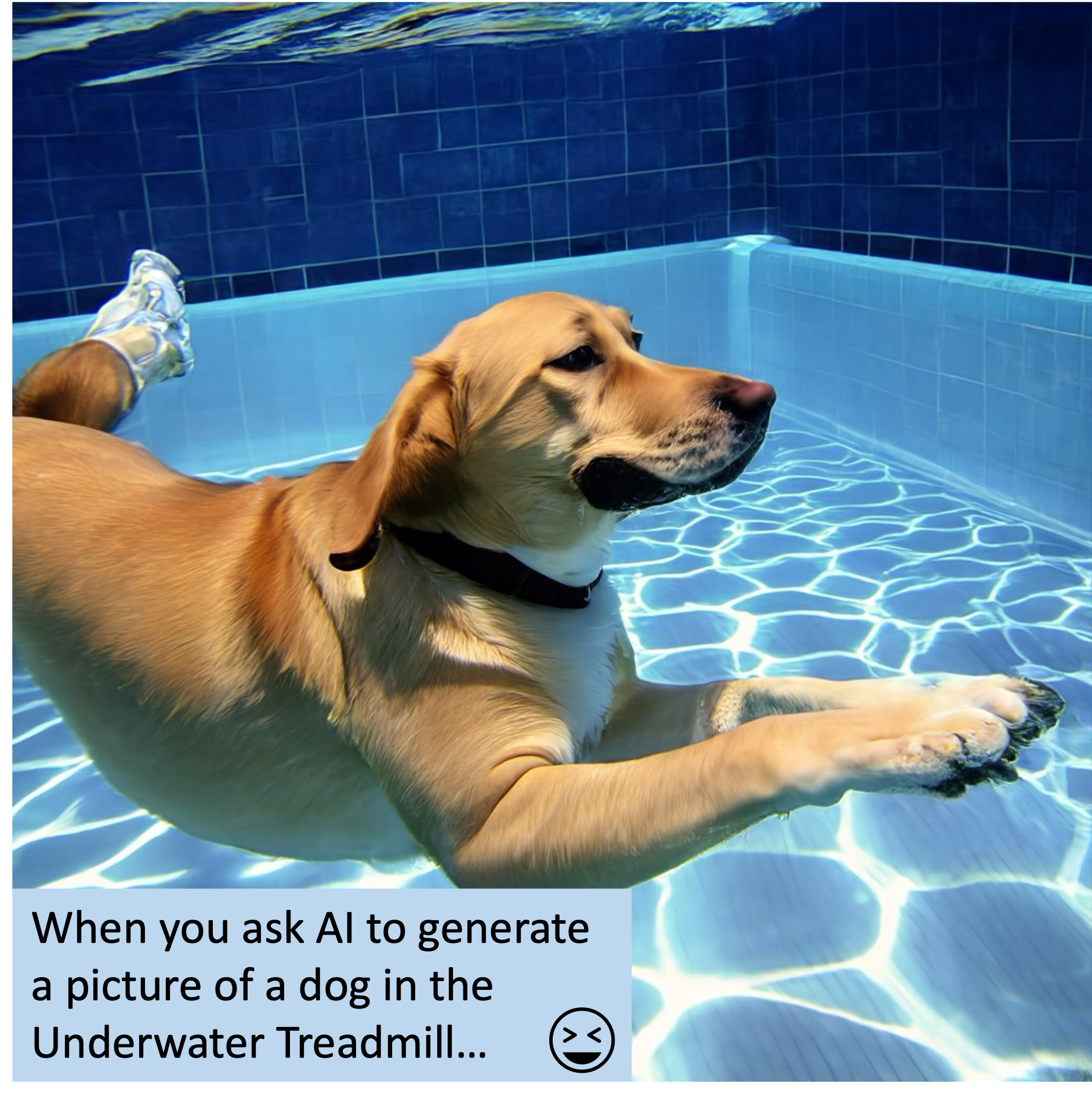Laurie's Blogs.
Mar 2024
A Handful of Canine Underwater Treadmill Studies – Knowledge Nuggets

Sometimes I struggle to come up with a blog topic. So, I think about cases I’ve seen in my clinic that week. I do a mental ‘walk through’ my clinic to come up with ideas for topics. I go through a listing of recent journal articles or blogs. I think about conversations I’ve had that week. Sometimes, I just luck out and think, I should see what’s new in the areas of _______.
And so, that is how it came to be that I thought, I wonder what has been published in regard to underwater treadmill therapy in dogs that I might not have read yet. Here we go!
1. Hodgson H, Blake S, de Godoy RF. A study using a canine hydrotherapy treadmill at five different conditions to kinematically assess range of motion of the thoracolumbar spine in dogs. Vet Med Sci. 2023 Jan;9(1):119-125.
This study took eight dogs and evaluated changes in spinal kinematics when using a dry treadmill at different angles of incline compared to an underwater treadmill using the same inclines.
Dogs were encouraged to walk on a dry, horizontal, underwater treadmill as well as under the same conditions with both a 10% and 20% incline. This was then repeated at a 10% and 20% incline with the addition of water to hock level.
reflective anatomical markers placed at the occipital protuberance, T1, T13, L3, L7 and sacral apex. A high-speed camera was used to record data. Dorsoventral motion of the spine as well as flexion, extension and range of motion (ROM) of T1, T13, L3 and L7 were recorded.
The study found significant differences in the full ROM of the vertebra at T1, L3 and L7, when comparing canine gait on a dry versus a wet treadmill, however, no significant differences were found in the degree of flexion and extension of any joints using the same comparison.
Researchers concluded the lack of significant differences in joint flexion and extension at T1, T13, L3 and L7 indicates the potential safe use of combining underwater treadmill and incline exercise in canine rehabilitation.
2. Bliss M, Terry J, de Godoy RF. Limbs kinematics of dogs exercising at different water levels on the underwater treadmill. Vet Med Sci. 2022 Nov;8(6):2374-2381.
This study aimed to assess how different water levels on an underwater treadmill (UWTM) can affect joint kinematics.
Markers were placed on bony landmarks on the limbs of 10 healthy dogs. An UWTM was used with water levels to the digits, tarsus, stifle and hip. Maximum flexion, extension and ROM were measured and recorded.
Findings
In comparison with a dry treadmill:
- Consistent increases in flexion of the elbow, stifle and tarsal joints, which were observed for all water levels.
- The carpal joint had increases in flexion all water levels apart from digit level.
- An increase in shoulder flexion was seen only with water on or above stifle level
- Hip kinematics had the fewest changes with only ROM increasing at high water level (hip level).
- Extension of the limbs joints was not markedly affected.
- The carpal joint had an overall decrease in extension with water at all levels
- The stifle joint had a decreased extension when water was at stifle height.
3. Miyata T, Kawai S, Yasuki A, Ishioka K. Changes in physiological parameters in healthy dogs on an underwater treadmill when the water level is set at the hip joint. Res Vet Sci. 2023 Aug;161:20-22.
The physiological parameters of dogs have been studied in swimming, but those of dogs walking on an underwater treadmill have not been documented.
This study used 4 Beagles and examined physiological parameters before and after 20 minutes of walking in an UWT at 4km/hr with water at hip height.
Findings
Results indicated that heart rate (125 ± 11.8 beat/min to 163 ± 9.5 beat/min) and lactate levels (2 ± 0.1 mmol/L to 2.4 ± 0.2 mmol/ L) significantly increased from before to after walking on an underwater treadmill.
MY THOUGHTS?
For the first study, I am thinking that the only thing learned is that it is safe to use either water or dry treadmills (if concerns exist about total ROM / excursion of the spinal column). I can’t see why there would be a concern in a volitional movement scenario however.
The second study is useful in that IF you want to gain an increase in ROM (flexion in particular), then the UWT is a good tool. If, however, you want to gain end range extension in a joint (i.e. as with late stage cruciate repairs) then you would want to utilize other therapeutic exercises to achieve that specific goal.
Now you’re up to date as well!
Until next time…
Cheers! Laurie


